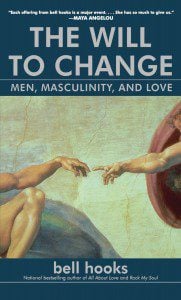The book of Acts reports that Jesus ascended to heaven forty days after the Resurrection. Accordingly, a tradition developed of celebrating Ascension Day forty days after Easter Sunday. That means Ascension Day is always celebrated on a Thursday. But many churches that gather for worship only once a week, move this festival to the following Sunday — celebrating “Ascension Sunday” instead of “Ascension Day.” So, for most Christians Ascension Day itself is usually “just another Thursday” with the possible exception of any excitement around watching episodes of 30 Rock or Community on TV.
I found myself in a similar “just-another-Thursday” situation five years ago, only weeks after my graduation from seminary. I had been invited to be a counselor at a two-week theology camp for high school students, and I unexpectedly discovered that the date for the first day of staff orientation was not just another Thursday. The entire staff of approximately fifty people was gathered in a large lounge. And, just before our first meeting was about to begin, someone proclaimed, “Hey, does everyone know that it’s Ascension Day today?!” Without thinking, I responded off the cuff. Although I only knew one other person in the room, suddenly I found myself saying, “Yeah, but who believes in the bodily Ascension anymore?” It was all downhill from there. I quickly became the designated heretic. Three or four voices around the room exclaimed, “I believe in the Ascension!” “Yeah, me, too!” “I do, too!” The other forty-five or so people in the room were looking around nervously, and, I suspect, thinking … “Awkward!”
Still failing to appreciate my surroundings fully, I said, “So what do you think happened? Did Jesus ascend up past the moon, wave at Mars and Saturn, and that, since the universe is round, the ‘Second Coming’ will be Jesus traveling full circle?” This time only one other counselor responded. He was a thoughtful Ph.D. student, whom I later came to respect. He said in all sincerity, “It says in the Apostle’s Creed that the Ascension happened, and that’s what I believe. I believe what it says in the Apostle’s Creed.” Finally coming to my senses, I said, “Maybe we should talk more later in private.” In my head, I was thinking, “This is going to be a long two weeks.”
I survived, but this was, as you might guess, not the only conflict of my time at the camp. It was a good experience overall, but I did not submit an application to be a counselor the next summer, and they didn’t call to recruit me. I did, however, have a number of the other staff members confide in me during the camp concerning a range of issues around which that they wished the camp were more progressive from the inclusion of lesbian and gay Christians to being able to question more openly the party-line orthodoxy of taking seriously the words of historic Christian creeds.
I did not go into that meeting on the first day of staff orientation looking for a fight. I thought it was just another Thursday. I had no idea it was Ascension Day. I had never thought that much previously about the Ascension. And I realized that I was operating on a different set of theological assumptions than most of the staff. When presented with a theological question, my first instinct is often to consult my personal experience. In contrast, many members of the staff had been taught to begin by asking, “What has been the traditional confession of Christian communities over time concerning this issue?” These two different starting points led us in different directions. For example, in regard to the Ascension, I felt compelled to reconcile the biblical account of Jesus ascending “up” into heaven with my personal experience of seeing a human land on the moon as well as other twenty-first century knowledge such as the relative nature of any direction like “up.” As almost everyone knows today, if you are, for example, in China, the perspective of the direction “up into heaven” is the opposite of our “up”; their “up” is our “down.”
Consistently measuring biblical accounts against twenty-first century knowledge can be extremely disillusioning. It can result in facile statements like the one I made on that first day of staff orientation that implied the Ascension has no meaning for the twenty-first century. And many of the staff members had been trained to react against the excesses that can result from allowing personal experience to undercut traditional views. Instead, they had been taught to begin by taking seriously the historical affirmations of orthodox Christianity.
I believe there is a middle way between either blindly dismissing the Ascension as meaningless or blindly affirming a 2000 year old worldview that fails to account for twenty-first century knowledge. The challenge is to hold both of these perspectives in tension: the skepticism that questions the historicity of the Ascension as well as the tradition that maintains the importance of the Ascension for Christianity. I want to begin by reading the account of the Ascension in Acts 1 through a more skeptical lens. Then I will attempt to articulate why, despite the truth of the skeptical perspective, we might still find deep meaning in the Ascension today.
I am skeptical, in particular, about at least two aspects of the Ascension: one, that it happened exactly forty days after the Resurrection, and, two, that Jesus ascended “up.” To begin with the timing of the Ascension, Acts 1:3 says that, “After his suffering [Jesus] presented himself alive to [the apostles] by many convincing proofs, appearing to them during forty days and speaking about the kingdom of God.” Then, on the fortieth day, Jesus ascended up to heaven.
The number forty occurs frequently in the Bible, and during a period that had much less exact historical dating standards than we have today, the number forty often appears to have been shorthand for “a long time passed.” Consider the following examples: In the story of Noah’s ark, did it rain for “forty days and forty nights,” or did it just rain for a really long time (Gen 7)? Were Isaac and Esau each “forty years old” when they married their respective wives, or was that a way of saying that they were middle-aged when they got married (Gen 25:20; 26:34). Did the Israelites eat manna for “forty years” in the wilderness, or were they in the wilderness a really long time (Ex 16:35)? Other example include: Moses being on top of Mt. Sinai for “forty days and forty nights” (Ex 24:18), Eli judging Israel for “forty years” (1 Sam 4:18), Goliath confronting Israel for “forty days” in a row (1 Sam 17:16), Saul’s son being forty when he became King of Israel (1 Sam 17:16), King David reigning for forty years (2 Sam 5:4), the prophet Jonah giving the citizens of Nineveh “forty days” to repent (Jon 3:4), and Jesus fasting in the desert for “forty days and forty nights” (Mt 4:2). That’s a lot of things happening in increments of forty. And there are quite a few more examples of the number forty in the Bible. But, even this incomplete list illustrates that the number forty was often biblical shorthand for “a long time passed.”
In regard to the Ascension, the cumulative effect of these examples leads me to question whether the Ascension happened exactly forty days after the Resurrection, or if the Ascension happened after “many days had passed.” My skepticism about the accuracy of dating the Ascension “forty days” after Easter is compounded by at least two other passages of scripture.
First, the Ascension is only mentioned in Luke and Acts. And if you read only the Gospel of Luke, one is led to understand that the Ascension happened in the same day as the Resurrection, not forty days later (Luke 24:50-53). Second, the apostle’s Paul’s famous post-Resurrection experience with Jesus on the Damascus Road does not happen during the first forty days after the Resurrection. Paul sees Jesus after years, not days, have passed (Acts 9, 22, 26).
In addition to my skepticism about the Ascension happening exactly forty days after Easter, I am also troubled by the direction of both the Ascension and of Jesus’ eventual return. Consider the following three excerpts from Acts 1: “[Jesus] was lifted up, and a cloud took him out of [the apostles’] sight (Acts 1:9); “[The apostles’] were gazing up toward heaven” (Acts 1:10); and [Jesus] will come in the same way as you saw him go into heaven.” – that is, presumably Jesus will “descend down” back to earth at some point (Acts 1:11). The book of Acts was written from a first-century worldview in which most people believed in a three-tiered universe. At the risk of oversimplification, imagine a cosmic three-layer cake. One tier was the surface of the earth. A second tier was a shadowy underworld beneath the earth’s surface that was understood in many different ways by various groups. The third tier was heaven, which was understood to be above the sky.
In this three-tiered cosmology, the sky was the barrier between earth and heaven. The sun, moon, and stars were thought to be stuck into the dome of the sky. From the perspective of a three-tiered universe, it made sense to talk about Jesus being lifted up on a cloud, the apostles looking up toward heaven, and Jesus descending back down from heaven in the Second Coming, but today we live well on the other side of the Copernican Revolution. In 1543, Nicolaus Copernicus published a book entitled On the Revolution of the Heavenly Spheres in which he proved that we live in a heliocentric solar system, not a geocentric one – meaning the earth revolves around the sun, not the other way around. The sun, moon, and stars are not like thumb tacks that God moves around on a giant domed bulletin board of sky. And heaven is not on the other side of the sky.
It is understandable that humans, before the Scientific Revolution, thought that some version of this three-tiered cosmology was true. But 500 years ago, Copernicus challenged the theologians of his day to reconcile traditional understandings (such as Jesus ascending “up” into heaven) with the scientific worldview that heaven was not “up.” Today, however, Christians have many more discoveries about the universe with which to wrestle. Modern astronomy tells us, not only that the earth is the “third rock from the sun,” but also that what we call the “sun” is only one star among over 400 billion stars in the Milky Way galaxy alone. Our sun is not even a central star. Our entire solar system is on the periphery of the Milky Way galaxy, which is only one of billions – yes, billions – of other galaxies in the universe.
To make sense of the Ascension today, we have to reconcile traditional Christian confessions with a much more challenging scientific worldview. As a Christian, I do not want to turn my brain off at the door of the church. It is insufficient merely to refer to a historic creed as an answer to a theological question. However, I also do not want to dismiss outright central Christian confessions like the Ascension without asking how we may understand them today.
It has been said that you should preach with the Bible in one hand and the newspaper in the other. For Ascension Sunday, I would add that the challenge is to preach with the Bible in one hand, while, in the other hand, holding copies the latest works of astronomers like Carl Sagan, Stephen Hawking, and Brian Greene.
The opposite approach is represented by reactionary fundamentalists, who, in the face of twenty-first century science, cling to biblical literalism. Take, for example, the Creation Museum in Kentucky. This so-called museum explains the existence of dinosaur bones with an exhibit featuring dinosaurs roaming around the Garden of Eden.” After reading news stories about this display, I wanted to yell, “STOP! You’re not doing Jesus any favors. You’re not making Christianity better; you’re just making science worse.”
So, what do I think happened “really happened” in regard to the Ascension? I offer the following thoughts as a tentative answer: I don’t think any one thing happened. The story of the Ascension, as recorded in the Acts of the Apostles, is just one version of the story. There are at least two other versions in the Bible alone. According to the last chapter of the Gospel of Luke, the Ascension did not happen forty days after the Resurrection; instead, it happened on the same day as the Resurrection. On the other extreme, according to the apostle Paul’s description of his experience on the Damascus Road, Jesus was still making post-Resurrection appearances, years, not days, after Easter. And, of course, many Christians in the last 2000 years have reported transformative experiences of Christ’s presence – a number of which have involved actual visions of Christ.
So, how should we understand the account of the Ascension recorded in Acts chapter one? It is one of many attempts by early Christians to explain how, even after Jesus’ death, they continued to have real experiences of Jesus – what could be called real experiences of the presence of Christ. And these experiences occurred in a variety of forms. The scripture we heard read today from Acts is one of many examples of early Christians doing their best – within the confines of their first-century context – to reflect theologically on their experience with Jesus of Nazareth, who came to be called “the Christ.” We can give thanks to God for these early Christians and their writings, but, 2000 years later, we also have our own experiences – and our own context – from which to reflect theologically.
For today, the most interesting question may be, not “How can we understand the Ascension?”, but rather, “How can we experience the Ascension today?” It is important not to see the Bible as a big book of really cool things that God, Moses, and Jesus did a long time ago, but that unfortunately don’t happen anymore. God is still speaking today; we need only to create time and space to listen.
We are blessed to have the secondhand accounts recorded in the Bible about how people of Israel and the early church reflected on their experiences with God. But these second-hand accounts can never substitute for cultivating our own firsthand experiences with God today.
In that spirit, I invite you to listen to a quote from the twentieth-century Roman Catholic monk and spiritual writerThomas Merton:
[The Ascension] is the feast of silence and interior solitude when we go up to live in heaven with Jesus: for he takes us there, after he has lived a little while on earth among us. This is the grace of Ascension Day: to be taken up into the heaven of our own souls, the point of immediate contact with God. To rest on this quiet peak, in the darkness that surrounds God. To live there through all trials and all business with the “tranquil God who makes all things tranquil.”
Listen once more and pay attention to any word or short phrase that stands out to you. Perhaps God will speak to you today through Merton’s words:
This is the grace of Ascension Day: to be taken up into the heaven of our own souls, the point of immediate contact with God. To rest on this quiet peak, in the darkness that surrounds God. To live there through all trials and all business with the “tranquil God who makes all things tranquil.”
If a particular word or phrase stood out to you from that passage, I invite you to repeat it gently to yourself and consider how that word or phrase might be relevant to something that is happening in your life.
There will one minute of silence following the sermon for you to consider how God might be speaking to you this morning through that word or phrase. Before we enter that minute of silence, listen again to Merton’s words:
This is the grace of Ascension Day: to be taken up into the heaven of our own souls, the point of immediate contact with God. To rest on this quiet peak, in the darkness that surrounds God. To live there through all trials and all business with the “tranquil God who makes all things tranquil.”
Notes
1 One of billions of other galaxies in the universe. Carl Sagan, Billions & Billions: Thoughts on Life and Death at the Brink of the Millennium. See also the 1997 film Contact by director Robert Zemeckis.
2 Preach with the Bible in one hand and the newspaper in the other. I refer to this quote as a way of summarizing my point about holding in tension the traditional account recorded in the Bible with the contemporary perspective of the day’s newspaper; however, I was unable to find an attribution as to its source. These words are famously attributed to the 20th-century Protestant theologian Karl Barth, but the quote in the form I used (which is the form most frequently attributed to Barth) is, neither what Barth said, not what he meant; he said almost the opposite. For a record of this and other similar quotes from Barth, visit the website of Princeton Theological Seminary’s “Center for Barth Studies” available at http://libweb.ptsem.edu/collections/barth/faq/quotes.aspx?menu=296&subText=468). Barth did not encourage others to hold the Bible and the newspaper in tension (a classic progressive view that I am espousing); instead, Barth taught his followers to “interpret newspapers from your Bible.” In other words, Barth understood the Bible as a higher authority than personal, contemporary experience; thus, he thought Christians should use the Bible as a lens through which to interpret contemporary events. In Barth’s day this perspective was known as Neo-orthodoxy. Today, the closest version of this perspective is called post-liberalism. The opposite view, which I am advocating, is to hold both the biblical account and contemporary, personal experience in tension.
3 See appendix below for suggestions about twenty-first century astronomy.
4 See www.creationmuseum.org.
5 Christians in the last 2000 years have reported transformative experiences of Christ’s presence. For one of many contemporary experiences with visions of Christ, see A Whole New Life: An Illness and a Healing by Reynolds Price (Scribner, 2003). The following is an excerpt from a review of this work by Wilda Williams for Library Journal: “While walking with Price across the Duke University campus in the spring of 1984, a colleague noticed Price’s awkward gait. That incident marked the beginning of the novelist’s four-year ‘collision with spinal cancer and paralysis.’ This remarkable memoir recalls the first surgery that failed to stop the tumor…the radiation treatment that destroyed the nerves in his spine and the use of his legs, the religious vision promising healing…and the friends and family who rallied around him. Now, clear of cancer though not cured, Price has a new life not only as a paraplegic but as a great writer whose creative energies have rebounded. Since his crisis, he has produced 14 books.
6 God is Still Speaking. See the UCC ad campaign (http://www.ucc.org/god-is-still-speaking/) as well as the scientific doctrine of uniformitarianism, which is just a long word for a worldview emphasizing the uniformity of natural laws in the universe throughout time. In other word, the same natural laws governed the universe before, during, and after the biblical period. The Bible does not describe some magical time when the laws of physics were periodically suspended.
For Further Reading
Did you enjoy listening prayerfully to the Thomas Merton quote at the end of the sermon as it was read slowly and contemplatively? If so, you might want to explore the ancient prayer practice called Lectio Divina (Latin for “divine reading” or “spiritual reading”). A good starting place is Daniel Wolpert’s Creating a Life with God: The Call of Ancient Prayer Practices. There is also a basic guide to lectio on the next page.
Did you feel peaceful and calm during the minute of silence following the sermon? Or do you want to grow more comfortable experiencing the presence of God in the present moment? A good starting place is Cynthia Bourgeault’s Centering Prayer and Inner Awakening.
Are you curious to learn more about Merton’s allusion to the “darkness that surrounds God,” then you may be interested in Gerald May’s The Dark Night of the Soul: A Psychiatrist Explores the Connection Between Darkness and Spiritual Growth.
Do you want to learn more about 21st-century astronomy, try one of the following:
- Stephen Hawking’s The Universe in a Nutshell,
- The Universe: The Complete Season One. This 2007 series is available as a 4-DVD set from the History Channel.
- Brian Greene The Hidden Reality: Parallel Universes and the Deep Laws of the Cosmos.














